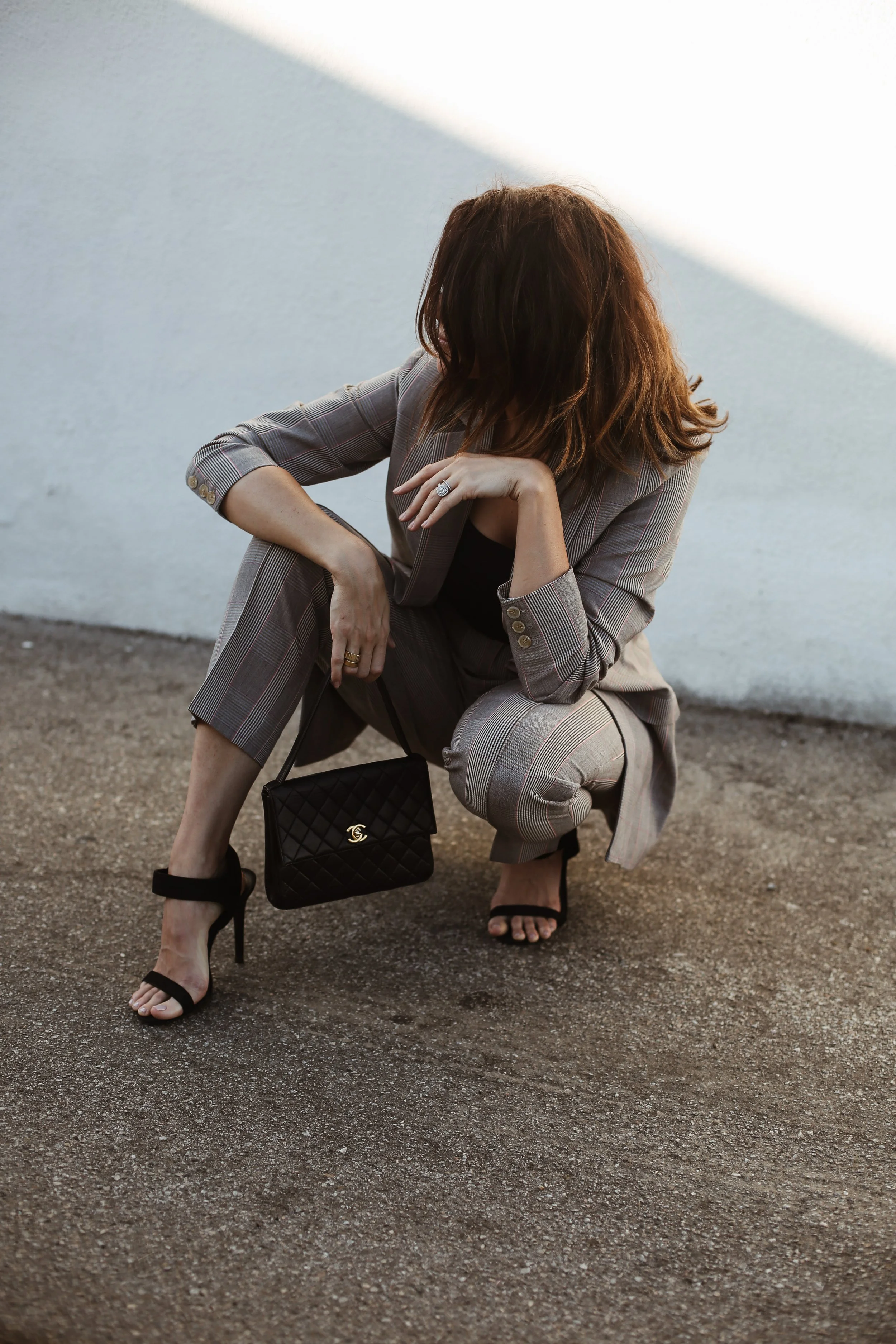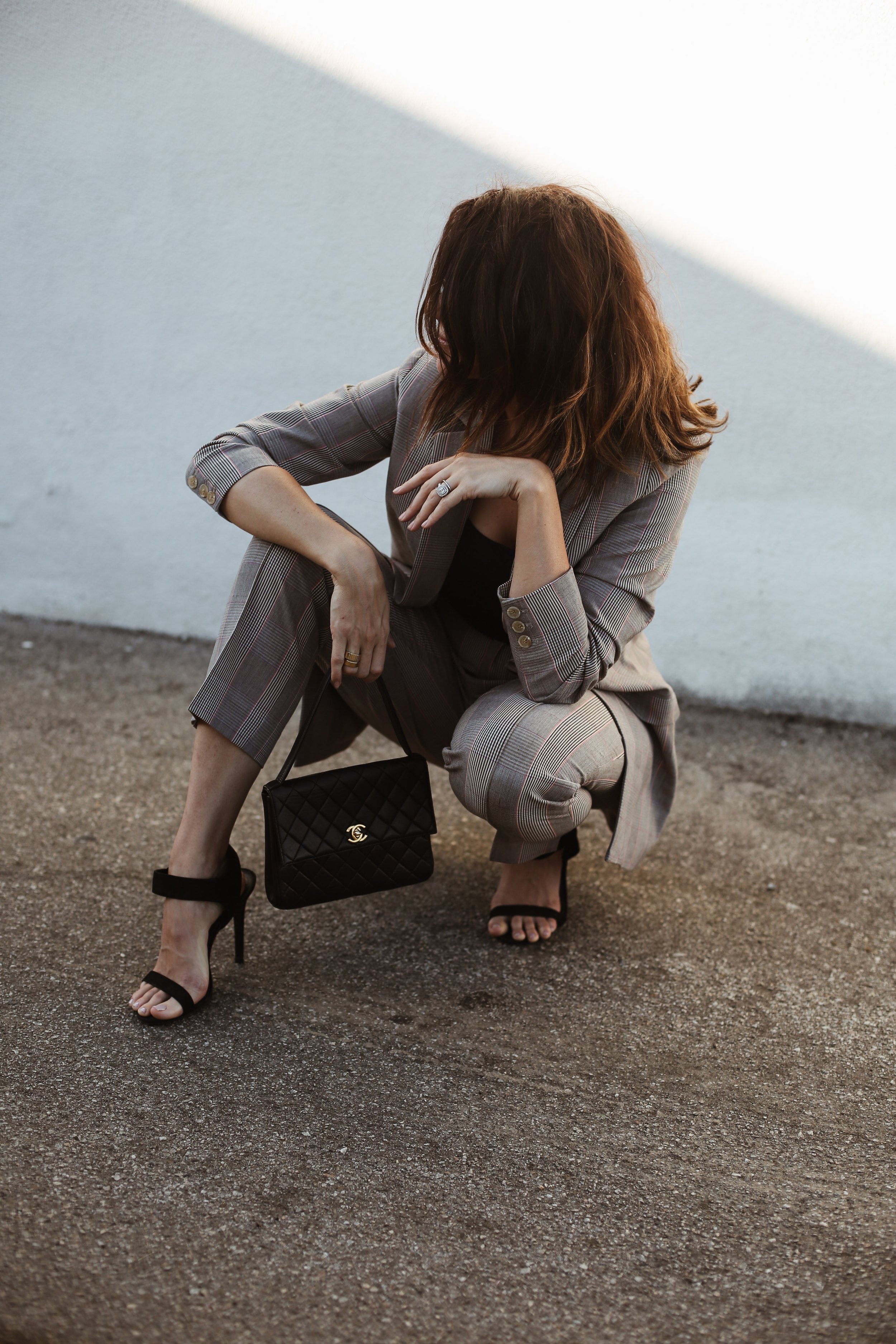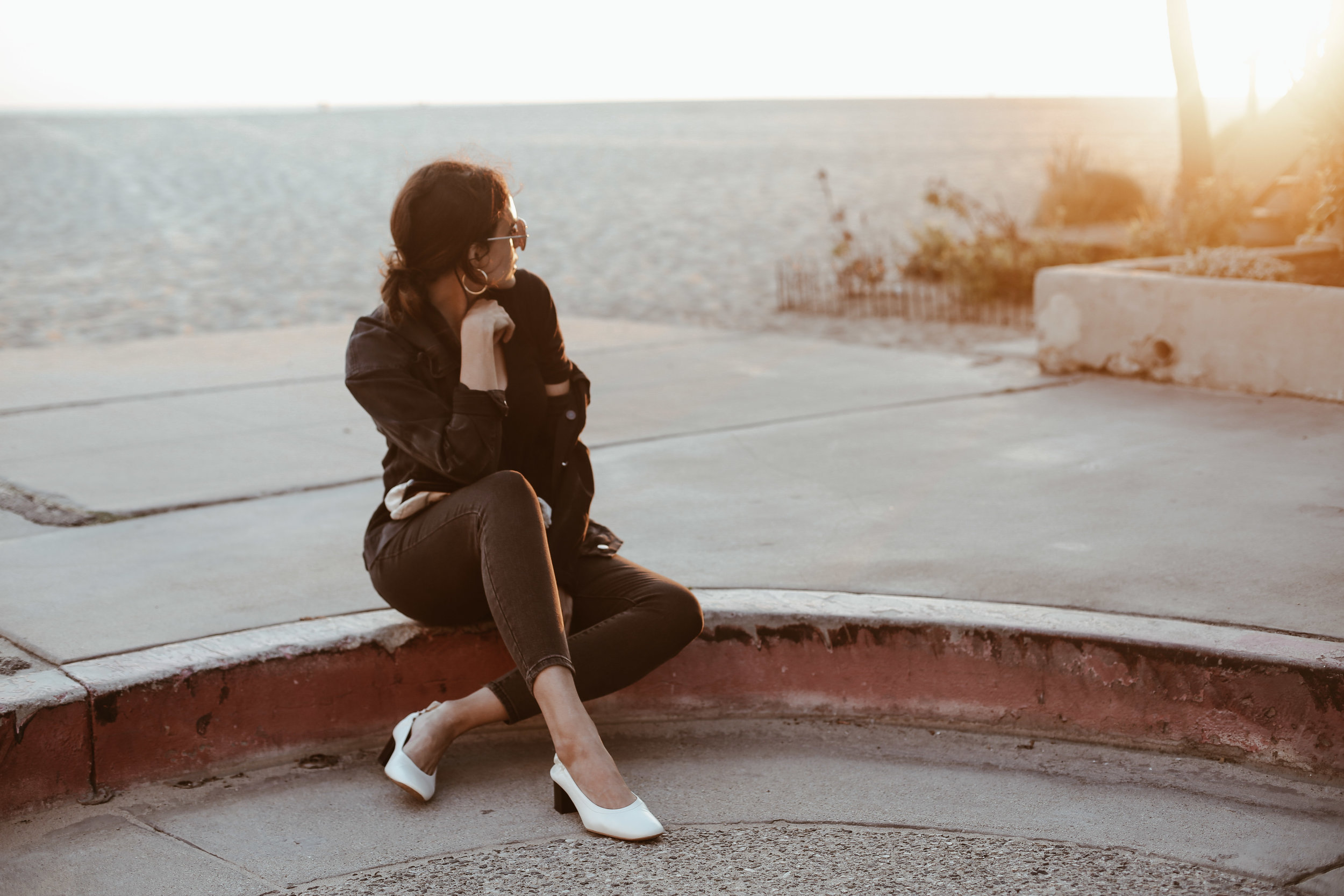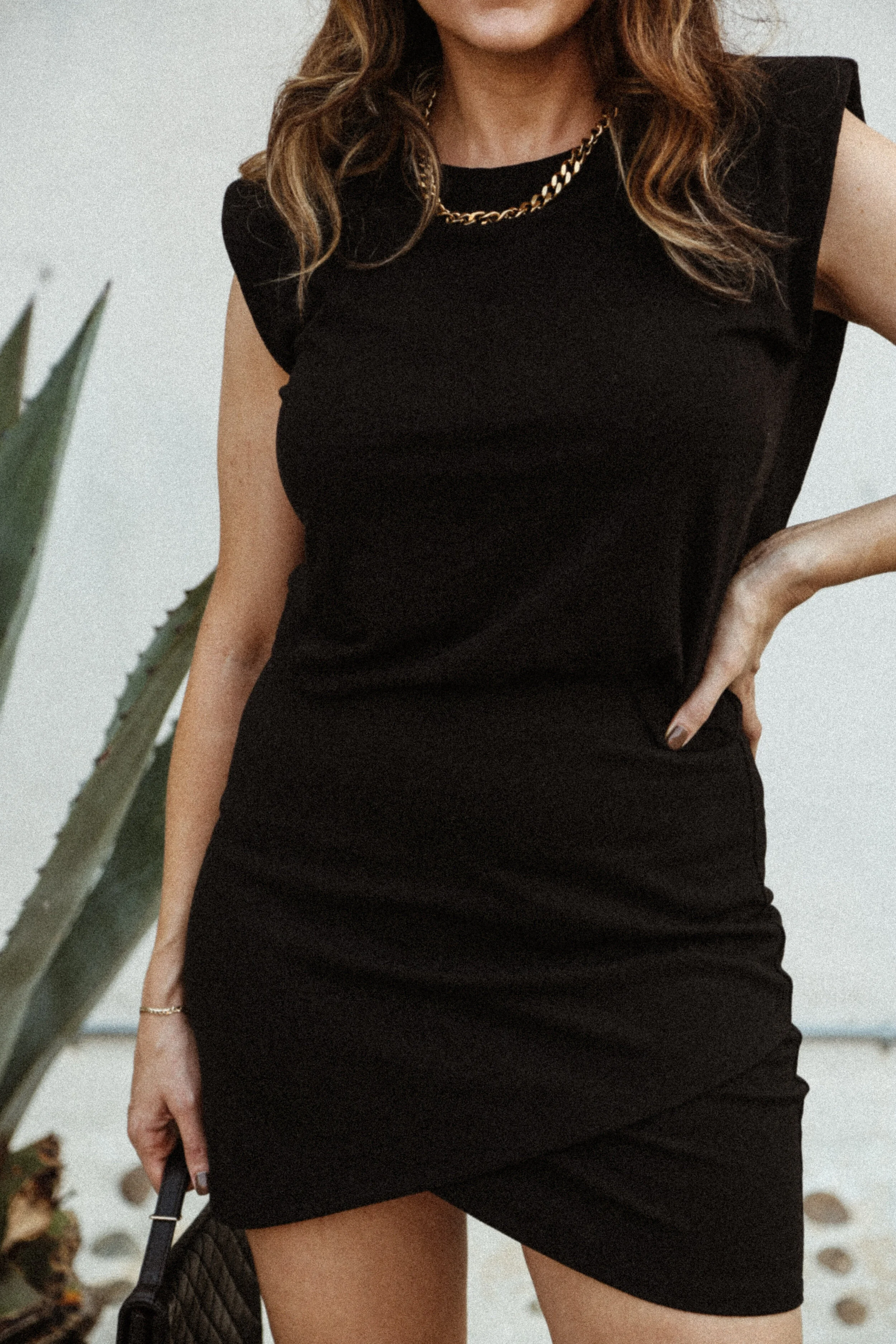How To Shop For Vintage Clothing

How To Shop For Vintage Clothing
I’ll never forget the moment I found THE jacket. We were in Europe for my 30th birthday, and we happened to pop into a vintage shop in Milan totally on a whim. There, tucked away in the back of the shop, hidden behind other jackets hanging on a wall halfway down a roped off staircase, overlooked and in need of some love, there it was, a Chanel jacket of my dreams. Things in the store were a bit out of my price range, and I wasn’t even sure if the jacket was for sale given the roped off stair case and all, but nevertheless, Dave decided he just had to ask about it for me. When the guy told us the price I nearly choked. It was mere pennies, relatively speaking in comparison to the other pieces in the store and what I knew it was worth. And while it did need love, it wasn’t anything that a trip to my tailor and dry cleaner couldn’t handle. So I knew then and there that it wasn’t even a question. I couldn’t leave that store without the jacket in hand. So I didn’t. And it’s still one of my most prized possessions to this day.
While not all of my vintage pieces have quite such exciting stories, each one is still so special to me. From bags to blazers to dresses to jewelry, each of vintage pieces has a story, each one has a history, each one takes me back to where I bought it, whether it was Paris, Chicago, Nashville, Hawaii or home in NYC (I especially love vintage shopping when I travel! Can you tell??), and each one adds something unique and noteworthy to my closet. Finding a gem of a vintage piece is like finding hidden treasure. It feels extra special and unique, a piece just for you, that no one else has. Not to mention the history. That’s always one of my favorite parts of a vintage piece, thinking about the history of it. Who wore it? Where did they wear it? Was it custom made just for them, or an heirloom family treasure passed down for generations? Has it been to fancy dinner parties or out on the town? Has it met exciting people, or sadness, or both? It’s like this whole world of secrets that I’ll never know, but that I get to carry with me wherever I go, adding my own bit of history to the piece as I go. And I have to say, as someone who has been vintage and thrift shopping for most of their life, that magical feeling of scoring a treasure of a vintage piece just never gets old.
Of course, outside of my romanticized notions of vintage clothing and loving the pieces for their uniqueness and history, there’s a few other reasons why I’m such a fan of shopping for vintage items. I think it’s the perfect way to find designer items at more approachable and affordable price points. I think it’s also a great way to add unique and one-of-a-kind original pieces to your closet versus just grabbing the same thing as everyone else off the rack at your local big box department store. I also think it’s fun to do when traveling as different things are available in different areas. Plus, it makes for a fun souvenir (that is far better than some dumb souvenir t-shirt, let’s be real, and like, ya know, you’ll actually use it and wear it). Not to mention, it’s also more eco-friendly and sustainable to buy pre-loved pieces versus something brand new. I mean, what’s not to love? Sure, it can certainly take a bit of patience and acquired skills to find incredible items, but I think it’s so worth it and I definitely think everyone's closet is better offer with a little vintage pizzazz in it.
As someone who has been shopping and styling vintage pieces for many years, I figured it was finally time I shared a few of my tried and tested tips on how to shop for vintage clothing, how to snag a great deal and how to hunt down those really, truly special pieces.
P.S. If you search “vintage” on my site, you’ll find lots of other posts about the topic of vintage goods as well as style inspo and outfits featuring many of my vintage pieces that I’ve collected over the years.
TIPS FOR How To Shop For Vintage Clothing
KEEP AN OPEN MIND
When shopping for vintage goods, it’s essential to go into it with an open mind and zero expectations. Don’t ever expect to find exactly what you’re looking for or a specific piece, because it just doesn’t happen that way. Allow yourself to be open to the possibilities of the exciting pieces you might find, that you weren’t even looking for, things you might not normally gravitate toward and unique pieces you might not have even thought to look for.
SET A TIME LIMIT
Whether it’s in a vintage store, vintage dealers, flea markets, thrift stores or even online shopping, searching for and buying vintage clothing can be incredibly overwhelming. Often times racks are overflowing and unorganized, stores are cramped, things are shoved in corners and boxes are stuffed to the brim. To be honest, it can all be a bit chaotic, so it’s easy to get sucked in, overwhelmed and lose all track of time searching through a treasure trove of goods inn the back of a store or the bottom of some box. Trust me, do yourself a favor and set a time limit, whether it’s an hour for a store, a few hours to browse online vintage shops or you make a day of it some local flea markets.
SET A BUDGET, BUT BE FLEXIBLE
Similarly to the time limit rule, you want to set some sort of budget. And, of course, like time, it can be a bit flexible. But knowing roughly what you have to spend, can help make decisions just a little bit easier when you’re buying clothes and goods at vintage shops.
TRY EVERYTHING
Don’t be afraid to step outside of your personal style and comfort zone and play dress up, so to speak. You never know how different something may look on, and what you may end up loving that you would have normally just overlooked. Also good to note that vintage clothing sizes virtually mean nothing compared to sizing these days so it’s crucial to try on every piece to make sure something actually fits, and don’t be afraid to go much larger or smaller than your normal size.
SEARCH FOR FLAWS
Ultimately you want every piece you get to be in good condition, but, often times, when it comes to vintage fashion, beggars can’t be choosers. It’s normal to find some slight flaws and signs of wear and tear on vintage pieces (Because, duh! It’s used!), but the important key to look for here is the extent of those flaws. Does it just need a good clean at a dry cleaners, does a hem need to be stitched, is it missing a zipper or is it stained beyond repair or needs some sort of hardware replaced that would be impossible to find (i.e. maybe something like a Chanel button)? For example, my Chanel jacket that I got in Milan just needed a cleaning and some seams repaired so I knew it was worth purchasing. However, if it was yellowed and deeply stained, or missing custom hardware, my rule of thumb would be to pass. Know what you can fix and what you can live with, and leave the rest.
FEEL THE FABRIC
While most things from past eras are made to stand the test of time aka the quality is far better than anything we have today, you still want to understand what you’re buying and what it’s made from. There’s nothing worse than getting a vintage piece you’re so excited to wear, only to break out into an itching fit the moment you put it on. So get familiar with fabrics and details and make sure that something is not only made from quality materials but also that it feels comfortable to the touch so, ya know, you can actually wear the piece.
UNDERSTAND TRUE VINTAGE
It’s important to note that vintage shopping and thrifting are not one in the same. Vintage refers to high end, luxury and/or designer pieces whereas thrifting is generally just used goods. Sure, you may stumble upon a good vintage piece while thrifting, but you will not be getting just any old used piece at a vintage shop. To be sure you’re getting true vintage pieces and not used pieces or knock-offs, be sure to check for things like labels, marks of authenticity (you can Google what these are for different brands; for example, I’ve done this with Chanel as, depending on the time frame, there are different marks and types of authentication to look for) and make sure you’re purchasing from trusted shops and vintage dealers.
HAVE A TAILOR + DRY CLEANER
Not every vintage piece will need some love, but most do, because, well, they’re vintage. Take time to find a good tailor and dry cleaner that you can trust, so you always know where you can take your vintage finds to be sure they’ll be given the love they deserve to make them almost as good as new again.
Where To Shop For Vintage Clothes
VINTAGE STORES
One of my personal favorite ways to shop for vintage; I think it’s so fun to spend time searching stores and seeking out the gems. I love What goes Around Comes Around (they have stores in both NYC and Beverly Hills) and Cavalli e Nastri in Milan (I talk more about this store here). I also love researching and finding vintage stores wherever I travel as vintage pieces are one of my favorite souvenirs to bring back from a place.
VINTAGE DEALERS
This is a good way to go if you’re looking for specific items or items from specific categories or designers, or if you’re newer to vintage and don’t know what to look for or what to avoid
ONLINE VINTAGE SHOPS
This makes vintage shopping much more accessible and something you can do from anywhere (which is especially great if you don’t live near a decent vintage shop); a few of my favorites include Vestaire, Depop, Tradesy, The RealReal, Elia Vintage (great for more minimal pieces, but drops do sell out very quickly), Na Nin Vintage and Audrey Leighton Vintage (beautiful curations of vintage designer goods; drops do sell out quickly, though). What Goes Around Comes Around is also available to shop online. eBay and Etsy can also definitely be worth checking out, and I even have a whole post dedicated to tips specifically for vintage shopping on these two sites. You can read the post here.
FLEA MARKETS
Another fun way to hunt for some vintage treasures; prices tend to be a bit more favorable but on the downside, there often aren’t fitting rooms so you may have to take a gamble on if a piece will fit you or not, there can be more “junk” to sort through to find the good pieces and sometimes it can be hard to tell what is real versus fake. I love flea markets in Europe, but here in the US there are some great ones in LA (Santa Monica, Weho, Long Beach and Rosebowl) and NYC (in Williamsburg).
THRIFT STORES
While thrift stores are primarily just a general hodge podge of used goods, you never know when you might stumble upon a hidden gem of a vintage item in one. I often find that vintage goods get more overlooked in thrift stores because they’re either more hidden or people shopping there don’t know what to look for/they’re simply looking for used goods, so keep an open mind because you’ll never know what you might find.







